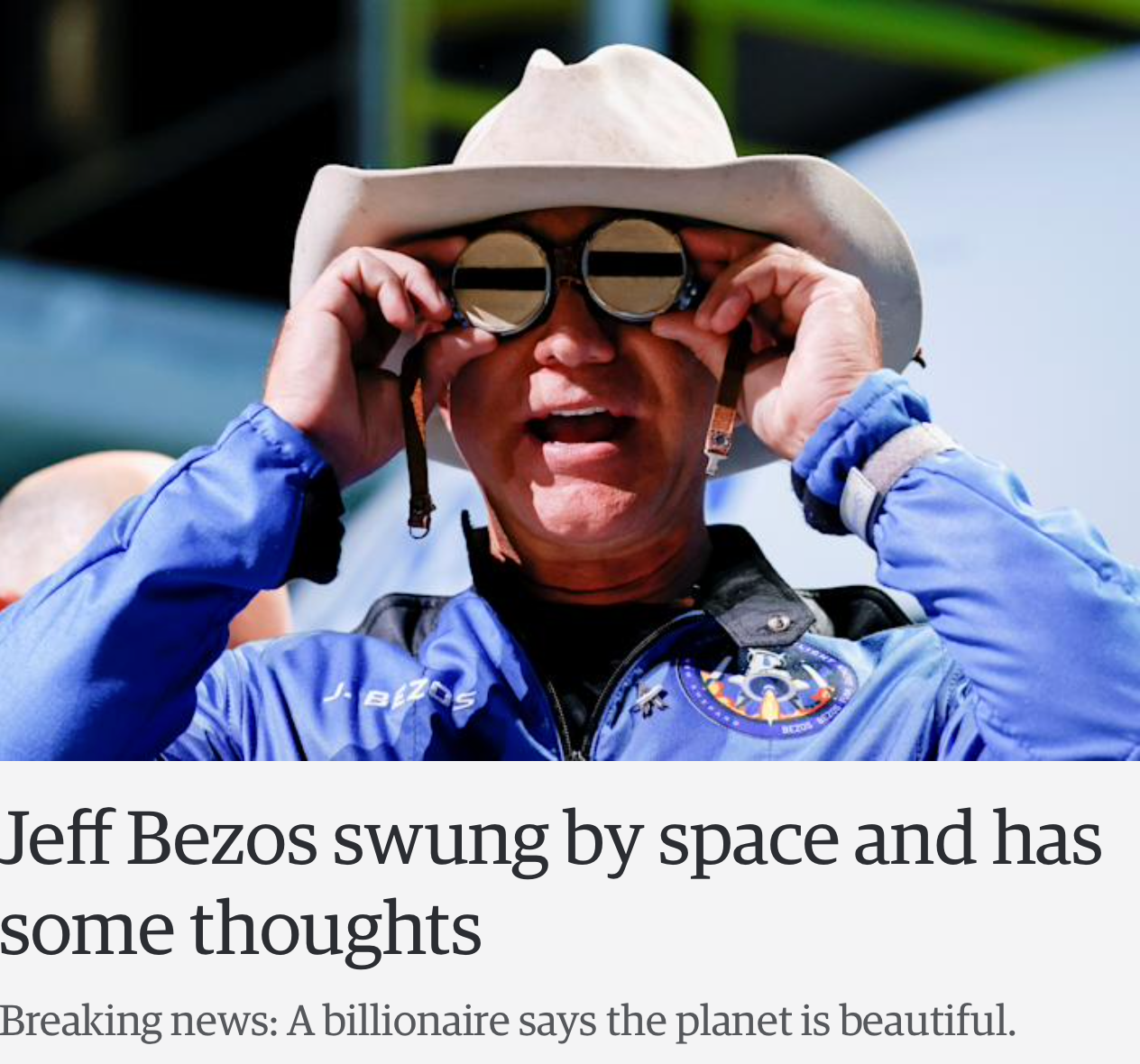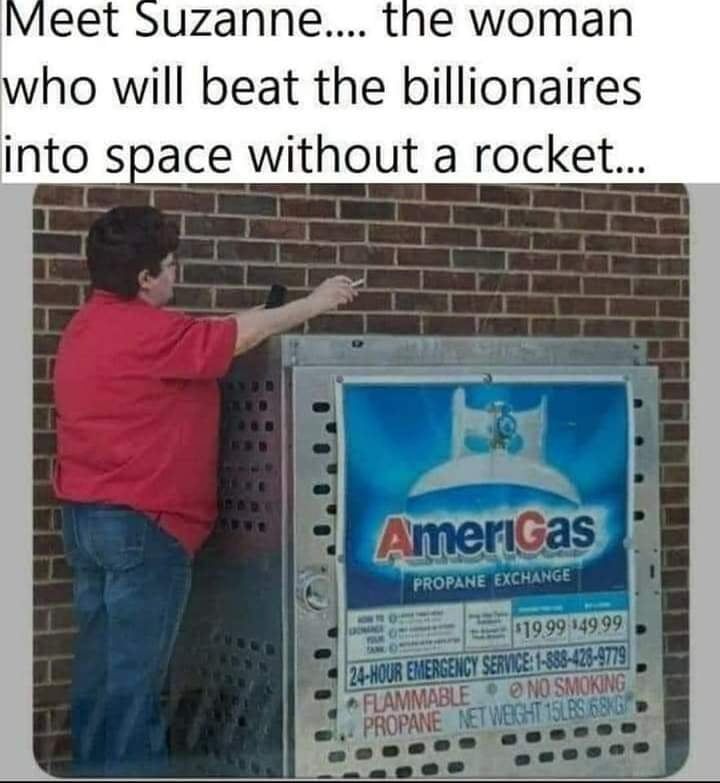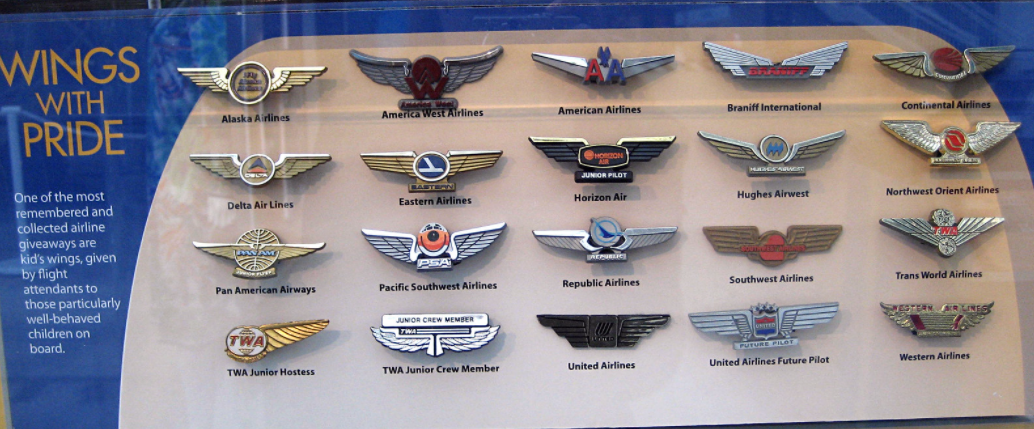Billionaires in Space
-
It's kind of fun watching people trying to justify this as anything other than a "billionaire's joyride."
For that kind of money,
you can@jon-nyc could probably buy a lot more fun for a long longer than 5 minutes.Oh, wait, I said "longer than 5 minutes."
Never mind.
-
Sending billionaires into space could save humanity from dying out, however it might be cheaper if we just cooked and ate the motherfuckers.
-
Rep. Earl Blumenauer (D-Ore.), who is spearheading the effort, said rich space dilettantes should have to pay taxes for those flights, and noted special concern about the environmental impact of sending people into space on trips with no “scientific value.”
"Space exploration isn’t a tax-free holiday for the wealthy. Just as normal Americans pay taxes when they buy airline tickets, billionaires who fly into space to produce nothing of scientific value should do the same, and then some,” Blumenauer said.
-
Project Mercury cost about $86 million per flight
26 flights - including tests, 6 with people
$2.25 billion in today's dollars
For Tuesday's flight, an anonymous bidder won the bidding in June for a Bezos flight at $28 million
Much cheaper than Alan Sheppard's seat
-
The Federal Aviation Administration has revised its criteria for awarding astronaut wings to those flying on commercial spacecraft, making the requirements stricter while including a significant loophole.
The FAA Office of Commercial Space Transportation issued an order July 20 describing its FAA Commercial Space Astronaut Wings Program and the criteria for awarding them. The order represents the first formal update of the wings program since it was introduced in 2004.
According to the order, the FAA will award wings to commercial launch crew members who meet the requirements in federal regulations for crew qualifications and training, and fly on an FAA-licensed or permitted launch to an altitude of at least 50 miles (80 kilometers). The order also requires those crew members to have demonstrated “activities during flight that were essential to public safety, or contributed to human space flight safety.”
The last provision is new in the order. An FAA fact sheet from June 2020 stated that the requirements for wings were to be on an FAA-licensed flight to at least 50 miles and meet the FAA regulations for flight crew qualifications and training.
“When the program was first created in 2004, its focus was to recognize flight crew members who furthered the FAA’s mission to promote the safety of vehicles designed to carry humans,” the FAA said in a statement to SpaceNews. “The FAA has now changed the focus to recognize flight crew who demonstrate activities during flight that were essential to public safety, or contributed to human space flight safety, among other criteria.”
That change, the agency added, “aligns more directly to the FAA’s role to protect public safety during commercial space operations.”
The FAA awarded the first commercial astronaut wings in 2004 to Mike Melvill and Brian Binnie, who piloted the three SpaceShipOne flights that flew beyond 100 kilometers that year. The agency didn’t award astronaut wings again until 2019, when it gave wings to Mark Stucky and CJ Sturckow for flying Virgin Galactic’s SpaceShipTwo beyond 50 miles in December 2018, and to David Mackay, Mike Masucci and Beth Moses for a SpaceShipTwo flight in February 2019.
All of the astronaut wings awardees are pilots except for Moses, who was considered a crew member for the February 2019 flight in order to evaluate cabin conditions on SpaceShipTwo.
The latest flights by SpaceShipTwo and Blue Origin’s New Shepard raised questions about who would be considered eligible for FAA commercial astronaut wings. The July 11 SpaceShipTwo flight carried four people in the cabin: Virgin Galactic founder Richard Branson, Moses and two other company employees. All four, according to the company, were either evaluating cabin hardware or conducting an experiment to demonstrate human-tended suborbital research, but not necessarily supporting public safety or human space flight safety.
The July 20 New Shepard flight carried four people: company founder Jeff Bezos, his brother Mark, Wally Funk and Oliver Daemen. None of them, though, operated the spacecraft, which was designed to be controlled from the ground, and thus would likely not meet the FAA criteria for commercial astronaut wings.
“This is an autonomous vehicle. There’s really nothing for a crew member to go do,” Bob Smith, chief executive of Blue Origin, said at a July 18 media briefing about the upcoming New Shepard flight.
However, the new order does allow the FAA to issue “honorary” wings to individuals who would not otherwise meet the criteria. Those wings would go to “individuals who demonstrated extraordinary contribution or beneficial service to the commercial human space flight industry,” the order states. “These individuals receiving an honorary award may not be required to satisfy all eligibility requirements.”
The wings do not carry any legal significance or other privileges. The FAA established them as part of its role to encourage, facilitate and promote commercial space transportation, in addition to overseeing its safety. They also mirror the astronaut wings awarded by NASA and the Defense Department to its personnel who fly on altitudes above 50 miles.
-
Sept. 2 (UPI) -- The Federal Aviation Administration on Thursday said it grounded Virgin Galactic amid an investigation of its July launch into space, which went off trajectory.
The agency said the VSS Unity, a SpaceShipTwo spacecraft, deviated from its course as it returned to Spaceport America in New Mexico on July 11.
"Virgin Galactic may not return the SpaceShipTwo vehicle to flight until the FAA approves the final mishap investigation report or determines the issues related to the mishap do not affect public safety," the FAA said in a statement to UPI.
Virgin Group CEO was on board the Unity flight, along with three fellow passengers and two pilots. They traveled about 50 miles above Earth before immediately returning to Spaceport America.
The New Yorker reported that about 20 miles above Earth, the spacecraft alerted pilots its path was too shallow and the nose wasn't vertical enough to stay on path in descent.
Virgin Galactic was working with FAA on its review of the Unity 22 flight, which the company said "dropped below its permitted altitude."
"We take this seriously and are currently addressing the causes of the issue and determining how to prevent this from occurring on future missions," a statement from the company said. "Although the flight's ultimate trajectory deviated from our initial plan, it was a controlled and intentional flight path that allowed Unity 22 to successfully reach space and land safely at our Spaceport in New Mexico.
"At no time were passengers and crew put in any danger as a result of this change in trajectory, and at no time did the ship travel above any population centers or cause a hazard to the public."




 image url)
image url)